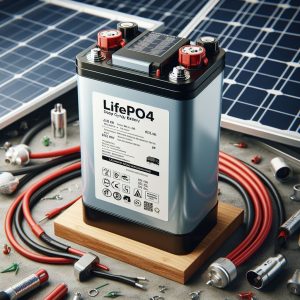Energy Storage Systems (ESS) play a crucial role in mitigating power outages by providing backup power, stabilizing grid frequency, managing peak electricity demand, supporting off-grid areas, and improving the reliability of renewable energy sources.
Causes and Negative Impacts of Power Outages
A power outage refers to the interruption of electricity supply. Common causes include:
- Overloading of Power Demand: When the grid load exceeds its carrying capacity, it can lead to equipment failure or voltage fluctuations, resulting in blackouts. For instance, extreme weather conditions such as heatwaves or cold snaps cause a sharp increase in the use of air conditioners and heaters, overburdening the grid.
- Natural Disasters: Severe storms, floods, earthquakes, lightning, and other natural disasters can damage power facilities like transmission lines, transformers, and power stations, causing widespread blackouts.
- Equipment Malfunction: Failures in power equipment within the grid, including substations, generators, and distribution devices, prevent stable power delivery.
- Human Factors: Maintenance, construction, or operational errors can also interrupt the power supply.
The impacts of blackouts extend beyond daily life inconveniences; they can halt industrial, commercial, and manufacturing operations, leading to equipment damage and product losses, which result in significant economic losses. Estimates suggest that storm-related outages alone cost the U.S. economy between $20 billion and $55 billion annually. The U.S. Department of Energy estimates that total costs to businesses due to outages amount to approximately $150 billion per year. Additionally, blackouts pose safety risks, especially in critical facilities like hospitals and communication base stations, where equipment failure could jeopardize patient safety or disrupt communications, affecting social stability.
Technical Principles of Energy Storage Systems
ESS stores electrical energy for rapid deployment during power interruptions. Common technologies include:
- Lithium-Ion Battery Storage: Lithium-ion batteries are widely used for their high energy density, longevity, and fast charging/discharging speeds, making them ideal for residential and commercial applications. They store electrical energy via chemical reactions and can release energy quickly when needed.
- Flow Battery Storage: Flow batteries utilize liquid electrolytes to store energy, suitable for large-scale storage, typically for load regulation and frequency control in power systems.
- Flywheel Energy Storage: Flywheels store kinetic energy through rotation, capable of delivering high power instantly, commonly used for grid frequency stabilization and power regulation.
- Supercapacitors: Supercapacitor technology is suited for instantaneous power release, often employed for short-term power fluctuation regulation in grids.
Role of ESS in Addressing Power Interruptions
- Providing Backup Power: When a blackout occurs, ESS can promptly activate to supply backup power, ensuring essential living needs. For example, home-based energy storage batteries can provide several hours of power for appliances and lighting systems, preventing inconvenience caused by blackouts.
- Grid Frequency Regulation: Maintaining a specific frequency (50Hz or 60Hz) is critical for grid operation. Imbalances between power supply and demand can cause frequency oscillations, potentially damaging equipment or causing blackouts. ESS regulates grid frequency through rapid charge-discharge cycles, ensuring stable grid performance.
- Managing Peak Power Demand: During periods of high grid load, power demand surges, risking overload and blackouts. ESS stores excess energy during low-demand periods and releases it during peak times, alleviating grid pressure and reducing blackout risks.
- Supporting Off-Grid Areas: In remote or off-grid regions with weak power infrastructure, such as South Sudan, Burundi, Malawi, Liberia, and the Central African Republic, blackouts are particularly severe. By integrating solar power generation with ESS, these areas can operate independently from national grids, using stored energy to mitigate blackout risks and meet basic living needs.
- Enhancing Renewable Energy Stability: Renewable energy sources like solar and wind power are subject to weather and environmental factors, making their supply unstable. ESS can store surplus renewable energy and provide power when sunlight or wind is insufficient, balancing power supply and minimizing blackouts caused by weather conditions.
Conclusion and Prospect
As ESS technology advances, its role in addressing blackout issues becomes increasingly prominent. By offering backup power, managing peak demand, regulating grid frequency, supporting off-grid areas, and enhancing renewable energy stability, ESS significantly improves the reliability and stability of power supply, reducing the negative impact of blackouts on the economy, daily life, and safety. In the future, as technology improves and costs decrease, ESS will find broader applications, becoming a vital tool for combating blackout challenges.




